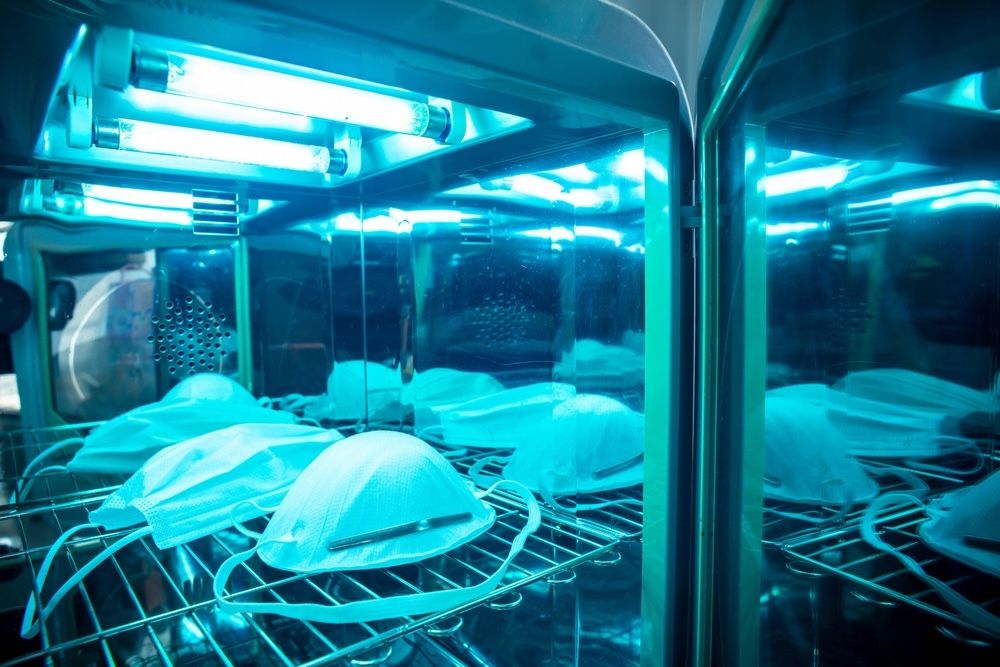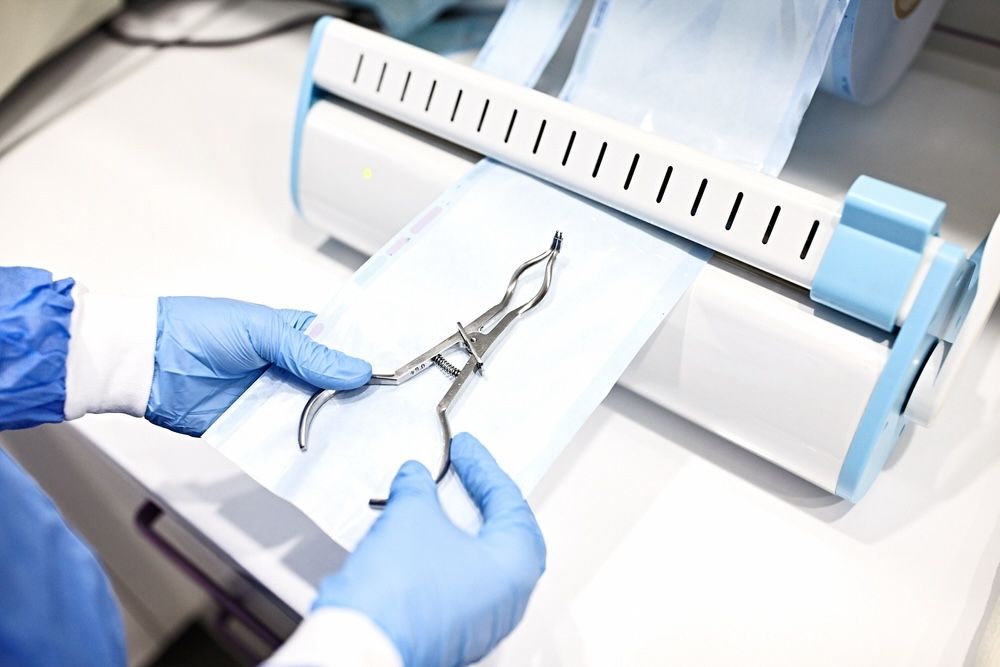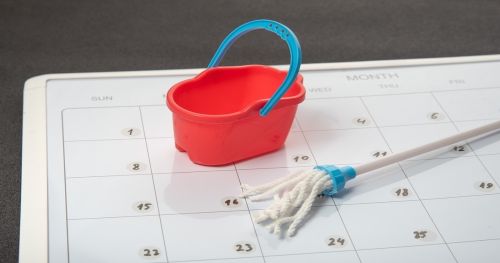The Role of Specialized Cleaning Protocols in Medical Facilities

Maintaining a sterile and hygienic environment in healthcare facilities is paramount for ensuring the safety and well-being of patients, staff, and visitors. Hospitals, clinics, and other medical environments are unique in their need for rigorous cleaning protocols, given the high risk of healthcare-associated infections (HAIs). These infections can have severe consequences, including increased patient morbidity and mortality, prolonged hospital stays, and elevated healthcare costs. Therefore, effective and specialized cleaning measures are essential to mitigate these risks and ensure a safe environment for all.
Unlike other commercial spaces, medical facilities require a tailored approach to cleaning that adheres to stringent health regulations. The complexity of these environments demands not only thorough and frequent cleaning but also the use of advanced disinfection techniques to eliminate a wide range of pathogens. From patient rooms and operating theaters to communal areas and restrooms, every part of a healthcare facility must be meticulously maintained to prevent the spread of infections.
In this context, healthcare cleaning goes beyond mere aesthetics; it is a critical component of patient care and safety. Proper cleaning protocols help in maintaining a sterile environment, which is vital for surgical procedures, patient recovery, and overall public health. This article delves into the critical aspects of healthcare cleaning, highlighting the advanced techniques, regulatory requirements, and the latest innovations in cleaning technology designed specifically for medical environments.
Understanding the importance of specialized cleaning in healthcare settings is the first step towards implementing effective infection control measures. By exploring the best practices and technological advancements in this field, healthcare administrators and cleaning professionals can enhance their cleaning protocols, ensuring that their facilities meet the highest standards of hygiene and safety.

The Importance of Rigorous Cleaning in Healthcare
In healthcare settings, maintaining a clean and sterile environment is not just a matter of routine hygiene but a critical factor in preventing healthcare-associated infections (HAIs). HAIs are infections that patients acquire while receiving treatment for other conditions within a healthcare facility. These infections can be caused by bacteria, viruses, fungi, or parasites and can lead to severe health complications, prolonged hospital stays, and even death. The financial implications are also significant, with HAIs contributing to higher healthcare costs due to extended treatment and additional medical interventions.
Effective cleaning and disinfection protocols are the first line of defense against HAIs. They play a crucial role in breaking the chain of infection, ensuring that harmful pathogens are removed from surfaces and equipment. This is particularly important in healthcare environments where patients may have weakened immune systems, making them more susceptible to infections. Rigorous cleaning practices help to reduce the microbial load on surfaces, preventing the transmission of infectious agents and protecting both patients and healthcare workers.
Key Areas Requiring Specialized Attention
Patient Rooms and Wards: These areas must be cleaned and disinfected frequently to minimize the risk of HAIs. High-touch surfaces such as bed rails, doorknobs, and medical equipment require particular attention.
Operating Theaters: Stringent cleaning protocols are essential in operating rooms to prevent surgical site infections. This includes thorough cleaning before and after procedures and the use of sterilized equipment and materials.
Restrooms and Communal Areas: These spaces are potential hotspots for the spread of pathogens and need regular and thorough cleaning to maintain hygiene standards.
Advanced Cleaning Techniques for Healthcare Facilities
To effectively combat healthcare-associated infections (HAIs), healthcare facilities must adopt advanced cleaning techniques that go beyond traditional methods. These techniques not only enhance the thoroughness and efficiency of cleaning processes but also ensure that hard-to-reach areas and high-touch surfaces are adequately disinfected. Here, we explore three cutting-edge cleaning technologies that are revolutionizing the way healthcare environments are maintained: electrostatic disinfection, UV-C light disinfection, and steam cleaning.
By integrating these advanced cleaning techniques, healthcare facilities can enhance their infection control measures, ensuring a safer and healthier environment for patients, staff, and visitors. The adoption of electrostatic disinfection, UV-C light disinfection, and steam cleaning represents a proactive approach to maintaining high standards of hygiene and reducing the risk of HAIs.
Electrostatic Disinfection: Electrostatic disinfection is a state-of-the-art technique that uses an electrostatic sprayer to apply disinfectant solutions. The sprayer works by charging the disinfectant particles as they pass through the nozzle. These charged particles are then attracted to surfaces, including those that are difficult to reach, ensuring even and comprehensive coverage.
How It Works: The electrostatic sprayer emits a fine mist of disinfectant solution. The positively charged particles in the mist are attracted to negatively charged surfaces, causing the disinfectant to wrap around and adhere to objects and surfaces uniformly. This ensures that the disinfectant reaches all areas, including crevices and corners that manual cleaning might miss.
Benefits: This technique is highly efficient and reduces the amount of disinfectant needed, as the charged particles cling to surfaces with minimal waste. It is particularly useful for large areas and complex surfaces, providing rapid and thorough disinfection. Electrostatic disinfection is ideal for use in patient rooms, operating theaters, and communal areas where comprehensive surface coverage is essential.
UV-C Light Disinfection: Ultraviolet germicidal irradiation (UVGI) using UV-C light is a powerful technology for sterilizing air and surfaces in healthcare settings. UV-C light has a wavelength of 200 to 280 nanometers, which is effective in destroying the DNA and RNA of microorganisms, rendering them inactive.
How It Works: UV-C light disinfection systems emit short-wavelength ultraviolet light that penetrates the cell walls of microorganisms, disrupting their genetic material and preventing them from replicating. These systems can be installed in HVAC systems to sterilize air or used in portable devices to disinfect surfaces.
Benefits: UV-C light disinfection provides an added layer of protection against HAIs by effectively reducing the microbial load in the environment. It is particularly beneficial in high-risk areas such as operating rooms, isolation units, and laboratories. This technology is non-toxic and leaves no residue, making it safe for use around patients and healthcare staff. Additionally, UV-C light can be used to disinfect medical equipment, reducing the risk of cross-contamination.
Steam Cleaning: High-temperature steam cleaning is a chemical-free method that uses steam to kill bacteria, viruses, and other pathogens. This technique is particularly effective for cleaning hard surfaces such as floors, walls, and countertops.
How It Works: Steam cleaners generate high-temperature steam that is applied to surfaces through a nozzle. The heat from the steam penetrates the surface, breaking down dirt and killing pathogens on contact. Steam cleaning devices often come with various attachments to clean different surfaces and areas effectively.
Benefits: Steam cleaning is an eco-friendly and effective method for disinfecting surfaces without the use of chemical disinfectants. This makes it an excellent option for areas where chemical sensitivities are a concern, such as in pediatric wards or environments with vulnerable patients. Steam cleaning can reach and sanitize areas that are difficult to clean with traditional methods, such as grout lines and textured surfaces. Additionally, the use of steam helps in the removal of biofilms, which are layers of bacteria that can be resistant to chemical disinfectants.

Compliance with Regulatory Standards
Healthcare cleaning protocols must adhere to guidelines set by organizations such as the Centers for Disease Control and Prevention (CDC), the Occupational Safety and Health Administration (OSHA), and the Environmental Protection Agency (EPA). Compliance with these standards ensures that cleaning practices are effective in preventing infections and safeguarding public health.
CDC Guidelines: The CDC provides comprehensive guidelines on environmental infection control in healthcare facilities, including recommendations for cleaning and disinfecting various areas.
OSHA Standards: OSHA's regulations focus on protecting healthcare workers from exposure to hazardous materials and infectious agents. This includes proper handling and disposal of biohazard waste.
EPA Regulations: The EPA regulates the use of disinfectants and sanitizers, ensuring that they are safe and effective for use in healthcare settings.

Innovations in Healthcare Cleaning Technology
The continuous evolution of technology has brought forth significant innovations in healthcare cleaning, enhancing the ability to maintain sterile environments and prevent infections. These advancements not only improve the efficiency and effectiveness of cleaning protocols but also address specific challenges faced in healthcare settings. Here, we explore three cutting-edge innovations: automated cleaning robots, antimicrobial surface coatings, and data-driven cleaning.
Automated Cleaning Robots: Automated cleaning robots represent a significant leap forward in the automation of routine cleaning tasks within healthcare facilities. Equipped with advanced sensors and artificial intelligence (AI) capabilities, these robots can navigate complex environments and ensure consistent and thorough cleaning.
How They Work: Cleaning robots use a combination of sensors, cameras, and AI to map out their surroundings and create efficient cleaning paths. They can detect obstacles, recognize different types of surfaces, and adapt their cleaning methods accordingly. Some models are equipped with UV-C light or electrostatic sprayers to provide additional disinfection.
Benefits: Automated cleaning robots offer numerous advantages, including the ability to work continuously without fatigue, ensuring high levels of consistency and reliability. They free up human cleaning staff to focus on more complex tasks that require manual intervention. These robots can also be programmed to clean specific areas at scheduled times, reducing the risk of human error and ensuring that all areas, including hard-to-reach spots, are thoroughly cleaned. Additionally, the use of robots can reduce the exposure of cleaning staff to potentially hazardous environments, enhancing overall safety.
Antimicrobial Surface Coatings: Antimicrobial surface coatings are innovative solutions designed to continuously kill or inhibit the growth of microorganisms on treated surfaces. These coatings provide an additional level of protection, particularly in high-touch areas where the risk of pathogen transmission is high.
How They Work: These coatings are typically applied to surfaces during the manufacturing process or as a post-installation treatment. They contain antimicrobial agents, such as silver ions or copper, which have natural properties to disrupt and kill microbial cells. Some coatings use advanced technologies that activate under specific conditions, such as exposure to light or moisture.
Benefits: Antimicrobial coatings provide a long-lasting protective barrier, reducing the microbial load on surfaces between regular cleaning and disinfection cycles. This continuous action is particularly useful in high-touch areas like doorknobs, handrails, elevator buttons, and medical equipment. The use of these coatings can significantly reduce the risk of HAIs, complementing routine cleaning efforts. Additionally, they can help maintain cleaner surfaces in environments with high patient turnover or during outbreaks of infectious diseases.
Data-Driven Cleaning: Data-driven cleaning leverages the power of data analytics to optimize cleaning schedules and ensure that high-risk areas receive the attention they need. By tracking cleaning activities and outcomes, healthcare facilities can enhance their overall hygiene and efficiency.
How It Works: Data-driven cleaning systems use sensors, RFID tags, and other tracking technologies to monitor cleaning activities in real time. This data is then analyzed to identify patterns, track compliance with cleaning protocols, and pinpoint areas that require more frequent or thorough cleaning. Facilities can use this information to adjust cleaning schedules dynamically and allocate resources more effectively.
Benefits: The use of data analytics allows for a more strategic approach to cleaning, ensuring that resources are deployed where they are most needed. This can lead to significant improvements in cleanliness and hygiene, particularly in high-risk areas such as intensive care units (ICUs) and isolation wards. Data-driven insights can also help in identifying trends and areas for improvement, leading to more effective infection control measures. Furthermore, the transparency provided by data tracking can enhance accountability and ensure that cleaning staff adhere to established protocols.

Conclusion
The role of specialized cleaning protocols in healthcare facilities cannot be overstated. With the right techniques, regulatory compliance, and technological innovations, medical environments can be maintained at the highest standards of cleanliness and hygiene. By prioritizing these practices, healthcare facilities can significantly reduce the risk of infections, protect their patients and staff, and improve overall health outcomes.
Maintaining a clean and safe healthcare environment is a continuous effort that requires dedication, expertise, and the adoption of the latest advancements in cleaning technology. By staying informed and proactive, healthcare administrators can ensure that their facilities remain sanctuaries of health and healing.
Check more articles on our blog

How to clean your home after COVID-19 quarantine?

The Importance of Acoustic Ceiling Tiles Cleaning in Office

Daily Kitchen Cleaning Checklist – Assured Hygienic Clean Environment
